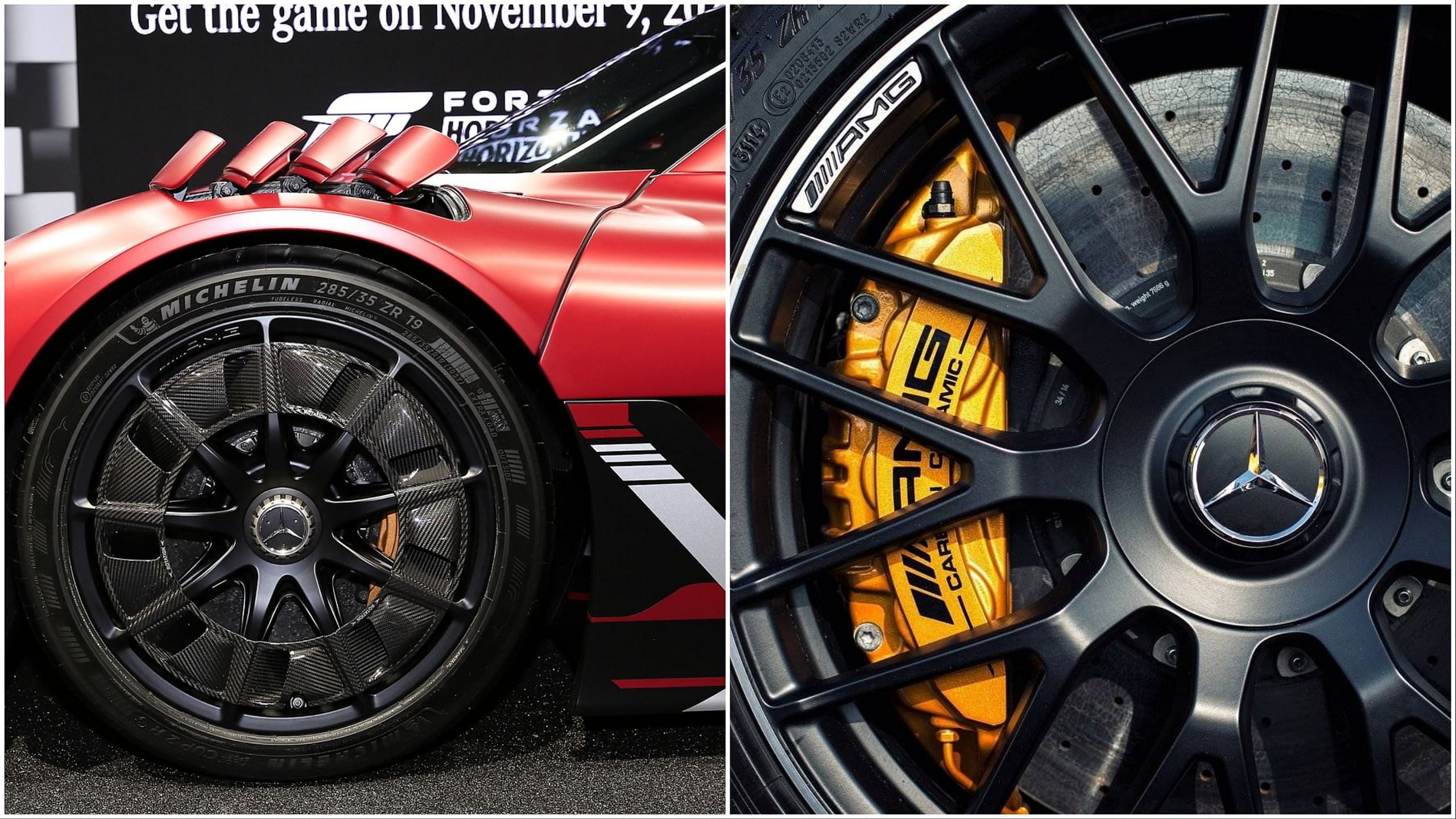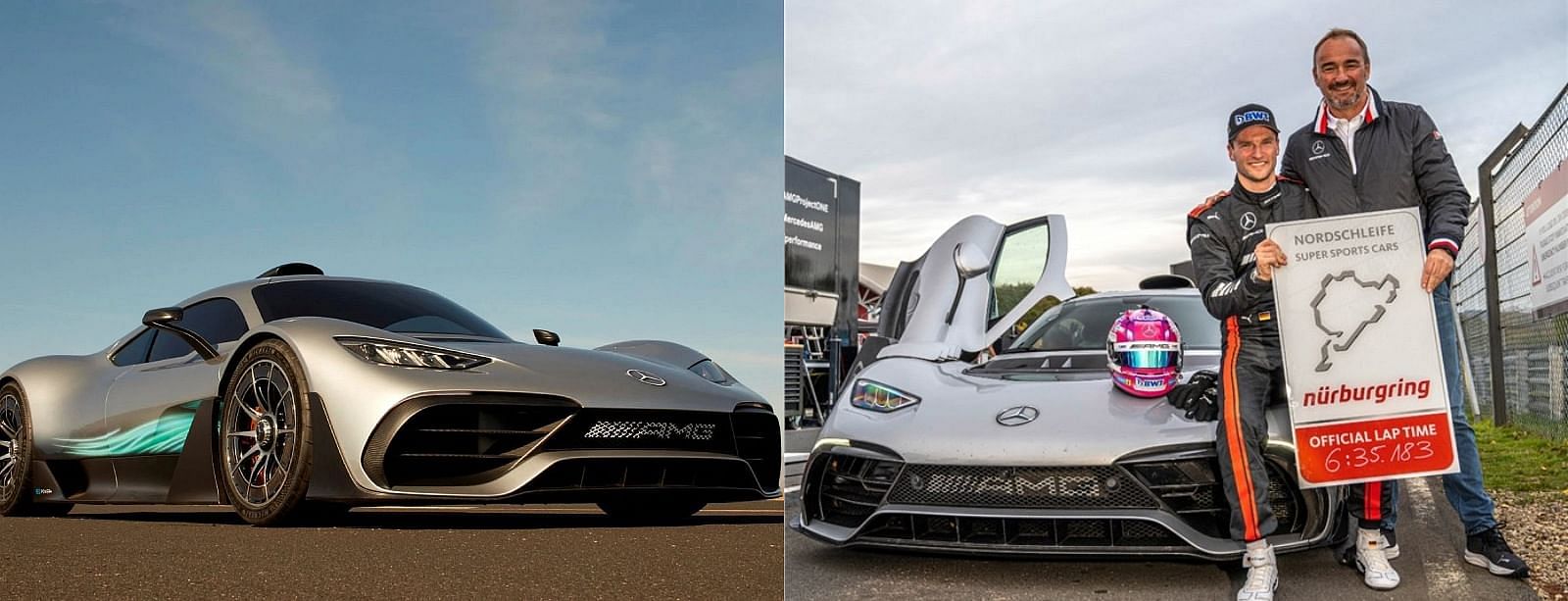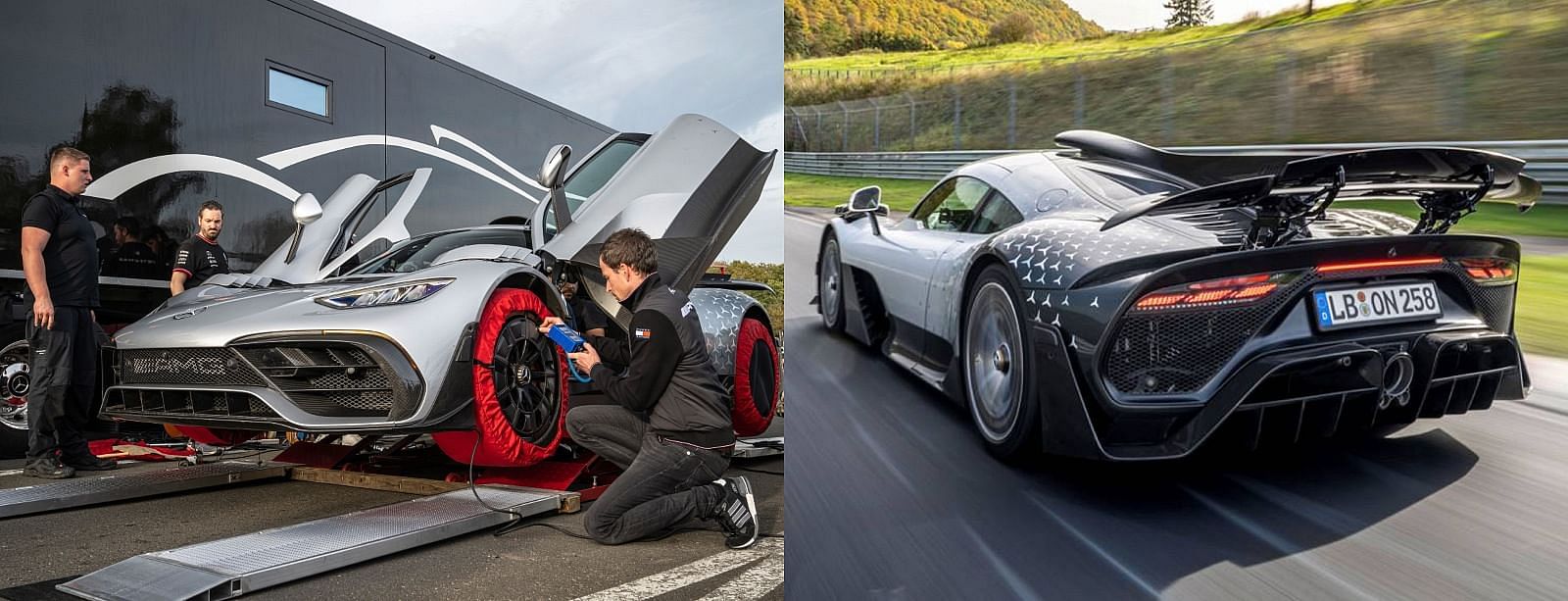Mercedes-AMG One sets an unrealistic Nurburgring time
The Mercedes-AMG One is a hypercar that is a plug-in hybrid. The technology it is based on is borrowed from the Formula 1 racing car. The vehicle was launched back in 2017 as a concept vehicle with the name Concept 1 by none other than Lewis Hamilton, who was also involved in the development of this car. The production-ready version of this car was launched on 1st June 2022 and the official production of the vehicle began in August 2022. In total, only 275 vehicles will be produced and all of them are sold out.
Published March 20, 2024

The Mercedes-AMG One, a plug-in hybrid hypercar, unveiled in 2017 under the name Concept 1 and inspired by Formula 1 technology, was introduced by racing legend Lewis Hamilton. The Nürburgring, located in Germany, is one of the world's most iconic and challenging racing circuits. It opened in 1927 and was originally a public road. Over the years, it has hosted numerous legendary motorsport events, earning a reputation as a testing ground for both production and racing cars.

Today, the Nurburgring remains a benchmark for performance in the automotive world. It is also nicknamed the Green Hell and for good reasons as well. The track has a total length of 15.53 Miles combining the Northern Loop and the Grand Prix circuit. The Track total has 170 turns and a maximum elevation of 300 Meters. The layout of the track is similar to that of European roads and the surface is not smooth as as a result maintaining traction is different from other conventional tracks.
In this article, we will see how Mercedes-AMG One set up a track record here that is actually quite absurd for a production-ready vehicle. The Formula 1 DNA of the car has proved its worth, have a detailed look at the performance of this amazing vehicle on the Green Hell.
The Mercedes-AMG One is not a light machine, in fact, the prototypes of the vehicle were tested by none other than Lewis Hamilton himself, who was involved in the development of the Mercedes-AMG One. This rather makes sense because the vehicle is based on the 2015 Mercedes-AMG Petronas Formula 1 car. The car has a 1.6L Turbocharged V6 engine with four electric motors.

The vehicle has a directly cooled 800V battery that powers the electric motor. The internal combustion engine is placed at the rear and powers the rear wheels, and two electric motors are placed at the front giving the vehicle AWD capacity along with superior traction.
Engine and Powertrain
The internal combustion engine produces 566 hp of power and the front two motors produce 161 hp each. There are two more motors, one is the MGU-K which is coupled with the crank shaft that works to regenerate energy, and another motor known as the MGU-H which is attached to the Turbocharger. The MGU-H helps to make the turbocharger more efficient by removing the Turbo lag by keeping the turbine spinning at high speeds thereby recovering the exhaust gases. The entire setup in combination generates a net power output of 1063 hp.

The Torque figures are not disclosed by the company as the calculations seem to be very tedious considering the complexity of the powertrain. As per the company, the hi-revving engine only has a life span of 31,000 miles after which the owners will have to return the vehicle to the company for an engine refurbishment. The engine of the vehicle is mated to a seven-speed automated manual transmission with a 4-disc carbon racing clutch to provide lightning-quick shifts.
Suspension
The suspension system of the vehicle is specially designed to reduce rollovers. It uses a five-link aluminum coil-over suspension setup along with the transverse push-rod suspension struts that come with adaptive damping adjustment. This setup allows for a quick change in direction without losing traction similar to a Formula 1 car.
Brakes and Wheels
The braking system of the Mercedes-AMG one is special as well as it features a hydraulic AMG carbon-fiber ceramic high-performance composite brake system with 400 mm ventilated composite discs in the front with six-piston calipers and 380 mm ventilated composite discs in the rear with four-piston calipers.

This when paired with ABS, three-stage ESP, and brake assist provides the driver with immense confidence while approaching a corner. The vehicle runs on 19-inch ten-spoke aluminum alloy wheels in the front and 20-inch ten-spoke aluminum alloy wheels in the rear which a covered with Michelin Pilot Sport Cup 2Rs tires to provide immense traction on all kinds of surfaces.
Body and Design
The body of the vehicle is made of entirely carbon fiber with an aim to reduce the weight of the vehicle. The aerodynamic design of the body includes moveable front slats along with two-part extendable rear wings with a drag reduction system. Even the wheels of the vehicle are optimized with NACA carbon fiber openings for better cooling of brakes along with increasing downforce thus facilitating better cornering.
Interior
The interior of the vehicle is ergonomically driver-centric along AMG-Motorsports bucket seats with Napa leather enveloping them.

There is also an infotainment system and the main component is the Formula 1 steering wheel which has a mode selection button on it.
| Lamborghini Huracan STO | Specs |
|---|---|
| Price | $2.72 million |
| Powertrain | 1.6L V6 with four electric motors |
| Horsepower | 1063 hp |
| Engine RPM Band | 1,280 RPM to 11,000 RPM |
| Transmission | 7-Speed Automated Manual |
| 0-62 mph | 2.9 seconds |
| Top Speed | 219 mph |
| Nurburgring Time | 6:35.183 |
With all said and done the vehicle is capable of generating 1063 hp of power and the idle RPM of the engine is 1,280. The Mercedes-AMG One manages to reach from 0 to 62 MPH in just 2.9 seconds and can reach a top speed of 219 MPH.
Nurburgring Time
Mercedes took two Mercedes-AMG One to the famous Nurburgring Nordschleife for testing and setting up a new track record. The company took their famous test driver Maro Engel who also tested the Mercedes-AMG GT Black Series and recorded a time of 6:48.047, which broke the Lamborghini Huracan Performante’s record.

The record of the Mercedes-AMG GT Black Series was broken by the Porsche 911 GT2 RS Manthey which created a new record of 6:43.300 in 2021. This was a difficult result to challenge for any production car, but when Engel reached that day, the conditions were not exactly favorable as parts of the track were still damp. Mercedes prepared the vehicle by selecting the “ Race Plus “ mode that ensures that all the power available is sent to the wheels and it also activates the active aerodynamics of the car. Maro Engel went behind the wheels on the last lap at 5:14 pm and he just pushed the car to the limits thereby setting up a record timing of 6:35.183.

He himself said later that on an ideal day when the track is dry and the traction is high, the Mercedes-AMG One can do even better, but still timing like this never happened with a production model of a car on Nurburgring. It was also mentioned by Maro Engel that the acceleration of the vehicle is phenomenal and he went as fast as 210 MPH on the faster sections of the track such as the Döttinger Höhe.
FAQs
What is the AMG 1 record at the Nürburgring?
At the Nürburgring, the Mercedes-AMG One has surpassed the old record by nearly ten seconds to achieve a new quickest lap for production cars. The 1049-bhp hypercar completed the 156-corner course in 6 minutes, 35.183 seconds.
What is the average speed of the AMG One at the Nürburgring?
Even though that's an average speed of 117.9 mph (189.8 km/h), the fastest segment of the lap isn't the fastest in some strange way. The extremely odd aspect is that the track wasn't in good condition.
Write a comment
Comments
No Comments Yet









